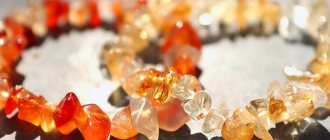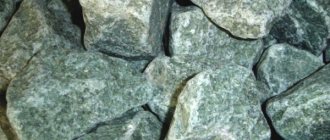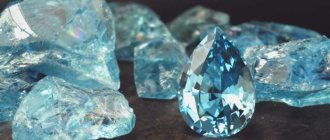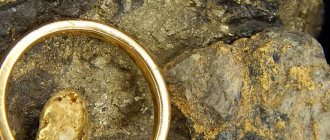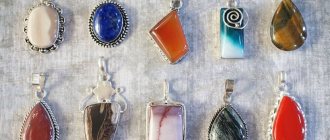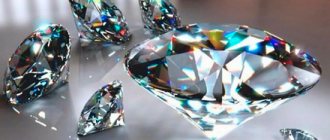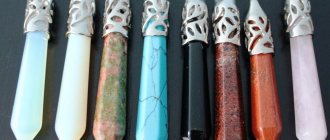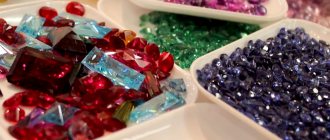When whiskey stones first appeared on the market, many saw them as just another advertising gimmick, recalling the famous Pet Rock fad. In 1975, cunning advertiser Gary Dahlem, positioning the smooth pebbles from the beaches of Rosarito Beach as the most unpretentious “pets,” managed to sell 1.5 million of these “toys” in six months and earn $6 million.
Maybe the inventor of whiskey stones, Andrew Hellman, was really haunted by Dahlem's fame? Or are Whiskey Stones really the thing? Let's try to figure it out.
Whiskey cooling stones
History of invention
American Andrew Hellman (then a banker) invented whiskey stones, according to him, by accident. While cleaning out his summer house, he discovered a leather bag containing old stones from his grandfather, a Swede by birth. At the beginning of the 20th century, such sets hung outside the door in almost every Swedish family and were used to cool hot dishes.
It was during this period of his life that Andrew often visited Edinburgh, where he learned a lot about whiskey and, in particular, that the Scots never diluted it with ice. Thinking about how to cool the drink in this case, Hellman remembered his grandfather's stones and, as he says, “put two and two together.” The result was the Whiskey Stones.
By this time, Andrew Hellman had already left the banking industry and owned the design company Teroforma, which developed and released the famous accessory in 2007. This is how the world learned about whiskey stones.
When choosing the material for Whiskey Stones, Teroforma tested a variety of minerals and settled on soapstone. In the USA, this natural stone was widely used for the manufacture of kitchenware and countertops, as it is extremely resistant to chemical attack, does not absorb odors and tastes, and is environmentally friendly. In addition, it is extremely heat-intensive - it quickly gains the set temperature and slowly releases it.
Andrew and Anna Hellman
What are “stones” and why are they needed in a watch?
Art & technology
15/04/2003
The stones are perhaps the most intriguing part of the watch mechanism. Why is their number always marked on the watch case or dial?
The stones are perhaps the most intriguing part of the watch mechanism. Why is their number always marked on the watch case or dial? Why do the British call them precious (jewels) and how much do they cost? What role do they play in the mechanism? Does their quantity affect the quality and cost of the watch itself? And these are just the questions lying on the surface.
Any specialist, when asked why stones are needed in a watch, will answer without hesitation: “To stabilize friction and reduce the degree of wear of the contacting surfaces of the mechanism.” This is exactly how the function of stones is designated in the NIHS 94-10 standard, adopted in 1965 by the Swiss organization NIHS (Normes de l'industrie Horloge Suisse). Let's try to figure out what this means.
The stone sharpens the trunnion If you imagine at least in general terms the operation of a watch mechanism, it becomes clear that its main axes must be under constant tension: on the one hand, the force of the mainspring presses on them, forcing them to rotate, and on the other, the speed of their rotation is restrained balance-spiral regulator. The balance support experiences almost the greatest load in the entire mechanism. Not only does this axis perform reciprocating movements at high speed, but the balance itself is also attached to it - a weighty thing.
The trunnions with which the axles contact the platinum and bridges of the mechanism are made as thin as possible in order to reduce friction in the axle supports and the energy consumption of the spring to overcome it. In any mechanism, a bearing is installed to stabilize friction between a rotating axis and a stationary frame (platinum).
So, watch stones are usually used as bearings or thrust bearings for axle journals. In fact, it cannot be said that stones are used to reduce friction in the axle bearings. And in principle, the coefficient of friction in a pair of hardened steel - ruby (diamond) is approximately equal to the coefficient of friction of hardened steel in a pair of brass. Why then use jewelry as bearings?
As mentioned above, the trunnions of the axes of wrist and pocket watches have a very small diameter - 100 microns. It is known that the force of pressure directly depends on the area of the contacting surfaces. Thus, watch stones are designed not so much to reduce friction as to increase the durability of the axle supports in the watch. In addition, stones do not corrode, and by sanding the stone, you can obtain a perfect and long-lasting clean surface.
In addition to the supports, stones are used in two other places that are subject to intense impact. Pallets mounted on the shoulders of the anchor fork and impulse stone are made from them. Again, only a very strong mineral can withstand the pressure of the teeth of the anchor wheel and the impacts of the horns of the anchor fork.
It is not surprising that watch stones became a real find for watchmakers in the 18th century, when the era of pocket watches began. The mechanisms became so small that the parts quickly became unusable under the pressure of the mainspring.
The first watch with precious stones in the movement was released in 1704. But the idea to use them in such an unusual capacity belonged to the great English watchmaker George Graham (1673-1751), who became famous for his invention in 1713 of the free anchor escapement mechanism, which is the most common in our time. Graham created more than 3,000 pocket watches during his lifetime, all of them dating back to 1725 with ruby axles, pallets and impact rollers.
Where do the stones serve? Since we have figured out what exactly the stones are for, let's look at what shape they should have, the types of stones and where exactly in the watch they serve. Watch stones can be of the following types: through-applied pallets, impulse
Through stones are the basis of the watch. There are 12 of them in the classic 17-jewel movement. They absorb radial loads in the axle supports. Some of them have cylindrical or olivated (rounded) holes. All through stones have a special recess - an oil can that can hold watch oil.
Overlay stones are designed to reduce friction on the end surfaces of the axles. They are installed, as a rule, on the balance and axles of high-speed wheels. In quartz watches, thrust bearings are sometimes not installed at all.
The optimal number of stones in a simple mechanical watch with a side hand is 17. They are usually arranged as follows:
Balance support - 4 (2 through and 2 overhead) Impulse stone (ellipse) - 1 Axle of the intermediate wheel - 2 Pallets - 2 Axle of the escape wheel - 2 Axle of the anchor fork - 2 Central trib - 2 Axle of the second wheel - 2
Sometimes manufacturers, for design reasons, remove some of the stones: they place the stone only on the lower support of the central wheel, and press a brass bearing into the upper one, guided by the fact that there is less pressure on it. In this case, the watch will honestly say: 16 stones. Well, if the watch has a central second hand, there is no need for a second axis and the number of jewels is reduced to 15. Naturally, various additional devices and dials - calendar, stopwatch, automatic winding can increase the number of jewels. Recently, modern mechanisms use 21 stones: two pairs of stones are also placed at the ends of the axles of the anchor and third wheels.
Industry versus nature Until the beginning of the twentieth century, pocket watches contained real precious stones both inside the mechanism and, as decoration, on the case. Everything changed when the technology for growing artificial sapphires and rubies was invented in 1902, which made it possible to increase the production of watch movements many times over. Watches have become a mass commodity. Nowadays, natural rubies are practically not used in watches. From a technical point of view, grown crystals are more stable in their properties and more predictable in processing. The only aspect in which real stones are still considered better than artificial ones is aesthetic.
A lot is not a little? If in the previous section the typical types and classic arrangement of stones were described, now let's see what deviations from the accepted norm are more common.
In principle, it is clear that the number of stones in a watch depends on the number of axes. If, for example, a chronograph has additional dials with second hands, then it would be a good idea to protect the trunnions of their axes with stones, the same is the case with the repeater axis. However, when you come across such markings as “50 stones”, “83 stones” or even “100 stones”, bewilderment arises: how and why were they stuffed there?!
In watchmaking, there is such a thing as “non-functional” or “decorative” stones - they can, for example, close an ugly hole in a circuit board or simply decorate a mechanism - if the back cover is transparent. But, according to the standard accepted throughout the world, only the number of functional stones is indicated on the marking. At least on all watches produced after 1965. What's the matter then?
The fact is that the concept of “functionality” is quite flexible. Some people believe that the stones installed to make the calendar disk move more smoothly are not functional. But they really reduce friction, and by a lot. In conventional mechanisms, a force of 20-25 grams per millimeter is required to set the disk in motion. And the stones make it possible to reduce this force by half, which means significantly reducing the load on the mechanism. Isn’t this functional, say, for ultra-thin or complex mechanical watches, which in addition to the chronograph also have moon phase indicators, power reserve and other functions?
True, there are also quite curious examples. For example, the American company Waltham released a watch with... 100 stones. 17 stones were in their rightful places, and the remaining 83 were placed around the automatic winding rotor. At the same time, it turned out that 84 holes were drilled on the circumference, and one of them remained gaping empty - the manufacturers did not want to exceed the round number. The stroke of the rotor, hung with stones, was, of course, smoother, but this effect could have been achieved with fewer stones.
Or another example: a watch from a Swiss manufacturer who, out of modesty, did not indicate his name, but proudly placed the marking “41 stones” on the cover. As you can see in the photo, 16 of these stones are set into the drum wheel, apparently to prevent it from rubbing against the mainspring. Friction is, of course, reduced, but in a rather wasteful way. Although if people bought these watches precisely because of the number of stones indicated on the case, it is difficult to call them completely “non-functional”.
The other “extreme” is a watch without stones, because in quartz movements they are, in general, not needed. The wheel drive of a quartz mechanism is loaded only at the moment when the stepper motor turns. And in this case, since there is practically no tension in the axes, the only thing needed to reduce friction and prevent wear of parts is to make the surfaces as light as possible. Therefore, the boards and wheels of quartz watches are often made of plastic.
And the friction coefficient of a steel axle on plastic or plastic on plastic is very low. Therefore, functionally in a quartz watch, stones are needed only in one place - the support of the stepper motor rotor. This is the only axis under tension. So the marking on a quartz watch “2 jewels”, “1 jewel” (if it is placed only under the lower pin) or even “0 jewels” (No jewels) does not mean at all that you are deprived of something. Happiness is not found in stones.
Published in the magazine “My Watches” No. 1-2003
Why are they needed?
The main and only purpose of the stone cubes is to cool the noble drink to the optimal 17–18 °C and maintain this temperature for a long time. Traditionally, ice is used for these purposes, but it has several significant disadvantages.
- It cools the whiskey excessively, causing the essential oils to “freeze” and the drink loses its unique aroma.
- The ice melts, diluting the whiskey with water, lowering the strength and changing the taste of the liquid.
- Melted ice ceases to perform the cooling function.
Whiskey Stones do not have these shortcomings. They remain cold for a long time and do not allow the liquid to heat up. At the same time, the stones do not change the taste of the drink in any way. "Simple, thoughtful, well made" the device does its job perfectly.
Analyzing the reasons for the popularity of stones, one cannot help but notice other attractive characteristics.
- This is the perfect gift.
- This is a timeless accessory that is not subject to aging or wear.
- This is an item that turns the consumption of a noble drink into a ritual.
“Whiskey on the Rocks” sounds like a song.
Whiskey stones are produced in the form of cubes with a side of 2–2.5 cm or disks with a diameter of 3–4 cm
Requirements for stove stones
In order for stones to serve you for a long time, they must meet certain requirements:
- Heat resistance - so that they do not collapse after repeated heating and cooling.
- Heat capacity - so that the stone accumulates heat and maintains the temperature in the steam room for a long time.
- Size - for wood-burning stoves it is better to use stones with a diameter of 7 cm, for electric heaters - no more than 5-6 cm.
- Environmental safety is a guarantee that when heated, the air will not become saturated with harmful substances.
How to use?
Using rock ice is easy.
When using for the first time, the cubes must be washed with warm running water, allowed to dry, placed in a special fabric bag and placed in the freezer for at least two hours.
When the stones have cooled, take a wide-bottomed glass (Rocks, Old Fashioned), place 2-3 cubes on the bottom, pour in 50 ml of your favorite type of whiskey and enjoy sipping the drink in small sips.
After use, rinse the stones with water and put them in a case. Whiskey Stones can be stored in the freezer or freezer compartment of the refrigerator.
Stones can be used to cool not only whiskey, but also cognac, vodka, champagne, and cocktails
Armagnac should not be refrigerated, although sometimes there is this advice: if you are planning to buy a short-aged Armagnac (VS), you can cool it a little so that the taste is not too strong.
What to consider when choosing?
Over the ten years that whiskey stones have existed, a whole industry has emerged in the world for their production. How to distinguish a good product from a cheap fake?
Original Whiskey Stones are made only from soapstone. Because they are cut from slab stone, they are never perfectly straight. Good stones do not have sharp edges or chips - they are perfectly smooth, rounded so as not to scratch the glass.
Since there are not many steatite deposits on the planet (the stone is found in the USA, Russia (Karelia), Finland, Brazil), manufacturers began to produce whiskey stones from other minerals (shungite, jade), as well as from steel. In principle, this is not the worst option.
What you really need to be wary of are cheap Chinese stones that look like soapstone but are actually made from granite. The mineral is absolutely not suitable for these purposes, since it has a porous structure that absorbs odors and microparticles of liquid. In addition, granite is characterized by increased radioactivity.
Whiskey stones for real cowboys
Types of stones
Diamonds
All stones can be divided into three large groups. The first group includes precious stones. They are used in making jewelry. These are diamond, sapphire, ruby. Such stones are beautiful and rarely found in nature. It is important to note that gemstones can also be used in industry. For example, diamond is used as a cutting material, because it is the hardest substance in nature.
Quartz
The second group is semi-precious stones. They are much cheaper than precious ones, but are also used in the manufacture of luxury goods. These include crystal and quartz. Chandeliers, dishes and other interior items are made from crystal.
Marble Quarry
The most common stones are included in the third group - ornamental stones. They are used in everyday life, primarily in construction. Examples of such stones are granite and marble.
Or maybe it's ice?
The opinions of true connoisseurs of the noble drink regarding the stones differed. Some people see in them much more show-off than benefit, and consider them just another advertising gimmick. There are those who claim that the stones leave a silicon aftertaste, or they don't like the way the cubes fall out into their mouth.
And yet the new accessory has enough adherents. Of course, for a party where drinks flow like water, you can’t stock up on any Whiskey Stones; it’s better to use good old ice. They are also not suitable for those who are used to diluted scotch or bourbon.
But if you like to slowly sip your favorite whiskey in close friendly company, these cubes will perfectly complement the pleasant ritual. What to choose is up to you.
Always yours, “Fragrant World”

